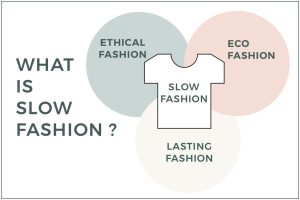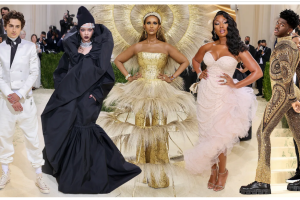Slow fashion is usually believed to be environmentally friendly fashion with a unique focus on speed, or the lack thereof. Novelist and activist Kate Fletcher coined the phrase “slow fashion” in a 2007 piece for The Ecologist, stressing the need to reassess how we see the clothing industry. Slow fashion, she felt, was about quality rather than quantity. “It’s not really about speed,” Fletcher wrote in the article, “but greed: selling more, making more money.”
What is Slow Fashion?
Slow fashion is regarded as a continuation of environmentally-friendly fashion, i.e. sustainable fashion. Quality, locally manufactured clothes, produced on a smaller scale and with shorter manufacturing schedules, distinguishes it today. Workers, the environment, and cultural links all receive attention. It is more than just the polar opposite of quick fashion; it’s a reinvention of what the apparel business could be.

The fast fashion industry’s rapid expansion is what prompted the slow fashion movement. People had begun to recognize the fast fashion model’s instability, from garment worker abuse to pollution.
According to Fletcher, slow fashion brands should emphasize quality over quantity and the environmental goals linked with sustainable fashion. It is no longer just an idea about connections and superior products; it now encompasses consumer lifestyles and ethical production. The circles of sustainability are closing as more conscious buyers become aware of the industry’s problematic practices.
Slow vs Fast Fashion: How to Apply these principles to Your Life
If you’re new to the movement, adopting a slow-fashion lifestyle can be scary; but, it doesn’t have to be. Here are some simple ways you can incorporate these principles into your daily life.
Buy Less
The foundation of slow fashion is the practice of consuming less. You can do this by focusing on what is already in your closet. Challenges such as the 30 wear challenge or creating a capsule wardrobe will help train your mind to see the many ways you can wear the pieces you already have.

Choose properly
When purchasing new apparel, look for high-quality items produced from environmentally friendly materials. Cheap clothing indicates that the items were not made to last; however, more expensive clothing does not automatically equal higher quality. Making higher-cost wardrobe expenditures will also help you shop less. If you need to be more budget-conscious, though, you can avoid the excessive expense by shopping secondhand. Shop at thrift stores and resale shops in your area.
Handle your clothes properly- so that they last longer
One of the most important things you can do is learn how to care for your clothes. Paying attention to the care instructions on the label is an often-overlooked technique. Keeping your clothes in good shape can be as simple as washing and drying them at the proper temperatures and with the right cycles.
Look for your community.
Things get a lot simpler when you discover someone who can teach you about the surroundings. Find others that are interested in slow fashion either locally or online. Finding friends who will support you in your journey can help you stick with it for the long haul.
Also Read: Fashion Industry is Killing The World with their Toxic Attitude.









